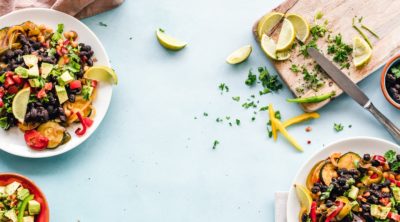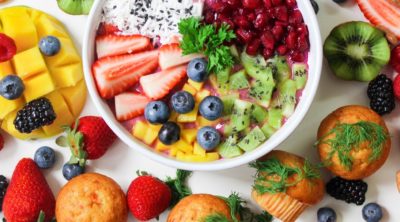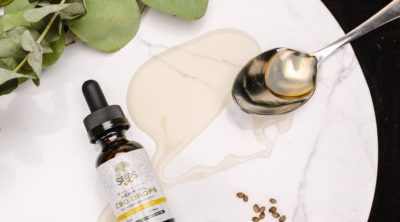
Despite following similar diets and exercise patterns, we observe that people are different from each other, possibly due to different body constitutions. Ayurveda has made a categorization of these body types. The article below discussed some of the Aryuvedic body types.
‘Ayurveda’ is a Sanskrit term, where ‘ayur’ means life and ‘veda’ stands for knowledge or science. So, roughly translated, it means the knowledge of life, or the science of life. In Ayurveda, all living and non living things are linked together. Humans and plants consist of five basic components, called ‘Panchbhootas’. These basic components are earth, water, air, fire, and ether (i.e., space). The non-material omnipresent qualities, which govern all material forms of basic matter are consciousness or intelligence called ‘Sattva’, motion or action called ‘Rajas’, and inertia called ‘Tamas’. Sattva, Rajas, and Tamas are together known as ‘Gunas’. The Panchbhootas and Gunas dictate the medicinal and healing properties of plants. The human body is a replica of the universe. The basic components give rise to three life forces called ‘Dosha’. Dosha is often roughly equated to biologic humor mentioned in the Greek system. Ayurvedic body types are basically divided into three major categories called ‘Vata’, ‘Pitta’, and ‘Kapha’. These three Dosha are constantly formed in the body from the food we eat and other physiologic processes.
Ayurvedic Body: The Types
Vata
Vata is a combination of air and ether. This is the most powerful force, which governs motion and controls blood flow, cardio-respiratory and all higher functions of the brain, movement of body fluids and excreta, and the most importantly, it exercises control over the mind.
Pitta
Pitta is the forceful combination of water and fire. Pitta stands for transformation. It governs metabolism, formation of tissue, and disposal of waste products. Pitta is essential for the digestive and endocrinal system of the body.
Kapha
Kapha is a combination of earth and water. It is essential for increasing cell mass, promoting bonding of tissues, preventing destruction of tissues, maintaining the strength and immune system of the body, and also determines body growth.
Each of the Dosha has its own characteristics. Let’s look at each one of them in detail.
| Characteristics | Vata | Pitta | Kapha |
| Basic Characteristics | Dry, cold, light, clear | Hot, light, fluid, clear | Cold, wet, heavy, cloudy, static |
| Basic Qualities | Creativity, generosity, freedom, enthusiasm, joy, vitality | Ambition, concentration, confidence, courage, happiness, intelligence, enthusiasm for knowledge | Caring, compassion, tenderness, faith, patience, grounded, stability, support |
| Governing Quality | Governs feelings of pain, anxiety, and anticipation | Digestion, metabolism, comprehension, and intelligence | Liquid secretions of the body, centered around the chest |
| Physical Features |
|
|
|
| Complexion | Brown in complexion. Rough, cold, dry, cracked skin | Fair, coppery, yellowish, reddish complexion. Soft, warm, and less wrinkled skin | Bright and fair complexion. Soft, lustrous, oily, cold skin |
| Appetite and Digestion |
|
|
|
| Perspiration | Do not perspire much | Perspire a lot | Moderate perspiration |
| Sleep | Light and disturbed sleep. Sleep less than other body types | Uninterrupted sleep for medium duration | Sound and prolonged sleep |
| Temperament & Memory | Quick understanding, but forgetful, little willpower, mental instability, low on tolerance and confidence, nervous and fearful | Good at comprehending, intelligent and sharp, get attached, angry, jealous, and hate easily | Slow at comprehension, but good with retention, tolerant, calm, forgiving and loving, at the same time |
| Common Ailments | Headaches, anxiety issues, neurological, and digestion problems | Skin and stomach problems, anemia, poor vision | Sinus and lung problems, slow and sluggish digestion, obesity, and depression |
| Do’s | Moderate exercise, such as walking and yoga. Massage with warming oils. Go to bed early | Moderate exercise, such as jogging, swimming. Massage with cooling oils. Keep a schedule of regular meal timings. | Rigorous and regular exercise. Massage with stimulating oil. Consume fresh vegetables, fruits and legumes. Eat bitter, pungent, light, dry warm food. |
| Don’ts | Avoid dry, cold, pungent, bitter, astringent and raw foods. Do not fast. Avoid heavy aerobic activity. | Refrain from fish, red meat, sesame and mustard oils, oily and fatty foods. Avoid sour, salty, oily foods. Do not over work. | Avoid heavy meals and over sleeping. Frozen food items to be avoided. |
| Factors that increase the Dosha |
|
|
|
Now you must be wondering, do people have only one Ayurvedic body type? Well, no. The truth is, often, people have a combination of two Dosha types. At times, even a combination of all three types. Combination of two Dosha is called Dwandwaja . Tridoshaja is a combination of three Dosha. Ekadoshaja is single Dosha type. With a combination of all these Dosha types, there are 10 types of Ayurvedic bodies. You will have to conduct a small research on yourself and find out what is yours. Accordingly, you will have to make small changes to your dietary patterns and lifestyle, in order to lead a comfortable life free of diseases.


